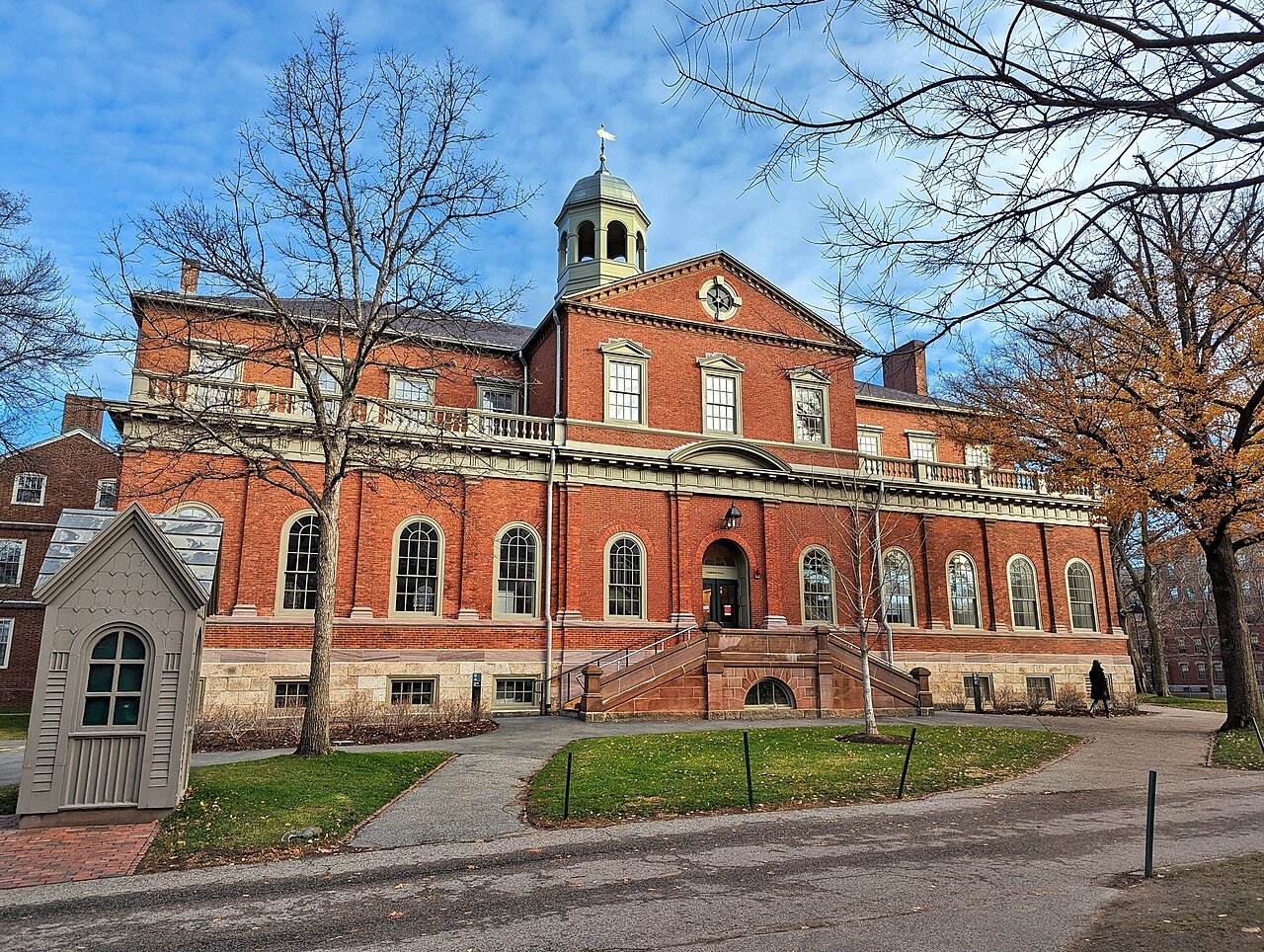Civil Nuclear Cooperation Through 123 Agreements: A Primer
As countries turn to Russia and China to jump-start their civilian nuclear programs, the next U.S. president will be forced to compete with rivals to protect the nonproliferation regime. The Atomic Energy Act of 1954 governs the export of U.S. nuclear technology.

Published by The Lawfare Institute
in Cooperation With

News of Saudi Arabia’s alleged undeclared nuclear cooperation with China to extract uranium yellowcake from uranium ore has generated bipartisan concern from U.S. lawmakers over the kingdom’s nuclear weapons intentions, and it may stoke existing tensions between the White House and Congress over the administration’s lack of transparency over the United States’s own negotiations with Saudi Arabia for civil nuclear cooperation. Since early 2019, members of Congress have grown increasingly concerned by the regional security and nuclear proliferation risks associated with concluding a nuclear cooperation agreement with the kingdom—in part based on concerns that Saudi Arabia could exploit reactor technologies and enrichment know-how gleaned from an agreement to one day build nuclear weapons. To address these concerns, lawmakers have introduced a number of proposals to amend existing presidential authorities to guarantee greater congressional oversight and ensure that Congress has the legal right to affirmatively approve the terms of any agreement before it enters into force.
At present the Atomic Energy Act of 1954 (42 U.S.C. §§ 2011-2059) serves as the legal framework for the development, regulation and disposal of nuclear materials and facilities in the United States. Section 123 of the act (42 U.S.C. § 2153) provides the legal framework necessary for the president to conclude nuclear cooperation agreements between the United States and foreign countries to export nuclear technology and materials for civilian use to the cooperating country. Specifically, Section 123 regulates the transfer of nuclear material originating in the United States and the export of reactors, critical reactor components and reactor fuel.
Changes to this existing rubric will likely complicate future administrations’ autonomy in concluding such agreements. And while negotiations with Saudi Arabia may be stalled for now, over the next few years the United States will likely have to contend with the kingdom’s continued interest in exploring nuclear technology, as well as with other major powers such as China, to preserve and advance U.S. nonproliferation goals. Given these developments, this post is a brief primer on these arrangements and the role they play in the nuclear nonproliferation regime.
Development of Civil Nuclear Cooperation Agreements
Civil nuclear cooperation agreements under Section 123 of the Atomic Energy Act (commonly referred to as 123 agreements) were originally conceived of by President Eisenhower as a means for the United States to project influence globally while also protecting and regulating against nuclear proliferation without appropriate safeguards. This was a task made even more important by the assessment that the Soviet Union aimed to use the export of its nuclear technology to garner influence abroad at the expense of the United States.
In response to this perceived dual threat—nuclear proliferation and growing Soviet influence—Eisenhower launched the United States’s Atoms for Peace program in a 1953 address to the United Nations. The program sought to guarantee the safe development of nuclear energy and the expansion of Washington’s influence while ensuring that the United States could better control the spread of nuclear technology and materials. The accompanying passage of the act by Congress marked a pivot from policies a decade earlier, including those in the original Atomic Energy Act of 1946, that prohibited the export of any such technology.
Internationally, the Atoms for Peace program led to the creation of the International Atomic Energy Agency (IAEA) by 1957. The IAEA statute, originally approved at the Conference on the Statute of the IAEA at the United Nations, established the organization as an independent international body charged with ensuring the development of peaceful atomic energy use while also providing supervision and control over nuclear material and technology. Shortly after the establishment of the organization and in response to a continued rise in nuclear weapons states (Great Britain, China and France) by the early 1960s, the United States led negotiations for a treaty that would give additional teeth to the IAEA’s safeguards mandate. In 1968, the Treaty on the Non-Proliferation of Nuclear Weapons (NPT) opened for signature and it entered into force two years later. The NPT tasked the IAEA with overseeing a broad nuclear safeguards agenda to include preventing the spread of nuclear weapons and weapons technology, promoting cooperation in the peaceful use of nuclear energy, and furthering the goal of achieving nuclear disarmament.
Meanwhile, shortly after announcing the Atoms for Peace program, the United States began to leverage the program to build influence. In 1955, the United States signed its first 123 agreement to assist Turkey with nuclear research. By 1967, the United States had 34 agreements in force—two-thirds of which were focused strictly on research. These early countries included Israel, Iran, India, Pakistan, South Africa, Venezuela and Vietnam. Some of these early agreements have spurred criticism over the years for the role they played in inadvertently helping to accelerate nuclear weapons programs around the world.
For example, between 1955 and 1974—after establishing a 123 agreement with India—the United States became India’s leading supplier of nuclear technology and materials, in addition to providing training for India’s scientists and $93 million in Atoms for Peace loans and grants. India detonated its first nuclear weapon in 1974, and by 1998 it had become a full-fledged nuclear weapons state. Similarly, after concluding a 123 agreement with Pakistan, the United States in 1962 provided the country with its first nuclear reactor. While at the time Pakistan hid its nuclear weapons intentions from Washington, today it too is a nuclear weapons state aided in part from an early jump-start that it received from the United States.
Perhaps most ironic of all, after completing a 123 agreement to authorize the export of technology and materials to Iran, the United States in 1967 helped build Tehran’s first nuclear research reactor. In addition, the United States provided training and expertise to Iranian scientists, helped the shah create the Atomic Energy Organization of Iran, and supported his plans to build 20 reactors in 20 years before the Islamic revolution in 1979 put an abrupt halt to nuclear cooperation.
Even with this complicated history in mind, 123 agreements today can still serve as a mechanism for responsible nuclear energy development. For example, the 2008 U.S.-India nuclear agreement led to India disaggregating its civilian and military nuclear sectors and placing the former under IAEA safeguards. And in 2009, the United States signed what has come to be known as a gold standard 123 agreement with the United Arab Emirates that guaranteed that the UAE would never seek to enrich or reprocess nuclear material or technology.
Today, 191 countries are party to the NPT, and the IAEA—with the authorities it received under the treaty—oversees an expansive nuclear safeguards regime around the globe. In 2019 alone, the IAEA conducted 2,179 inspections in 183 countries and maintained safeguards over 717 nuclear facilities around the world, which highlights the role that the Atoms for Peace program has played in helping bring about the general acceptance of nonproliferation norms in the international community.
In addition, twenty-three 123 agreements are currently in force. This includes two (with Canada and the IAEA) that date back to the original launch of the Atoms for Peace program as well as agreements with U.S. rivals and fellow nuclear weapons powers Russia and China. In 2018, the Trump administration concluded the latest 123 agreement for civil nuclear cooperation with Mexico, although the agreement has not yet entered into force.
Legal Requirements of 123 Agreements
A 123 agreement is a congressional-executive agreement that provides the overall legal framework for the United States to engage in civilian nuclear cooperation with a foreign country, including the export of nuclear reactors, critical reactor components and reactor fuel.
The statutory requirements called for by the Atomic Energy Act, discussed in greater detail below, include a list of guarantees and desired safeguards to be implemented by the cooperating country; a “Nuclear Proliferation Assessment Statement” submitted by the president to Congress; and a written determination by the president that the performance of the proposed agreement “will promote and will not constitute an unreasonable risk to, the common defense and security.”
If in concluding a 123 agreement, the president has secured all required guarantees from the cooperating country, then the agreement functions as an ex ante congressional-executive agreement, meaning that the agreement will enter into force without any required action from Congress. Specifically, the statute describes a requirement for 90 days of continuous session after which the agreement enters into force absent a joint resolution disapproving of the agreement.
If, however, the president has exempted a country from any of the requirements specifically provided under the Atomic Energy Act, then the agreement can better be understood as an ex post congressional-executive agreement, whereby Congress must approve, by joint resolution, any such 123 agreement for it to enter into force.
Of course, this legal distinction is less pronounced on the international plane whereby both congressional-executive agreements and Article II treaties are considered of equal stature. It is important to note, however, that the conclusion of a 123 agreement does not obligate the United States to export any nuclear technology; it only authorizes such exports.
Turning next to the specific nuclear safety measures required by the statute, Section 123 requires that nine nonproliferation conditions be met before an agreement can be signed. Specifically, the cooperating party must agree to place all nuclear material and equipment transferred under certain safeguards, which include IAEA safeguards if the country is a non-nuclear weapons state. The host state must guarantee the physical security for all nuclear material, it must guarantee that it will refrain from nuclear explosive testing or other military purposes, it must guarantee that no no nuclear material originating from the United States will be enriched or reprocessed, and it must guarantee that it will not re-transfer the material to unauthorized persons or beyond their jurisdictional control without consent. In addition, the United States reserves the right to require the return of any nuclear technology from a non-nuclear weapons state in the event of unauthorized military nuclear work or abrogation of IAEA safeguards. The host country must guarantee that no plutonium, no uranium-233 and no uranium-235 enriched to greater than 20 percent will be stored in any facility that has not been approved in advance by the United States. Finally, the host country must guarantee that any nuclear material or facility that it produces or constructs as a result of the agreement will be subject to all of the aforementioned requirements.
These requirements are not absolute and, as mentioned previously, can be exempted by the president. Specifically, a president may exempt any of the requirements if he or she determines that it would be “seriously prejudicial to the achievement of the U.S. nonproliferation objectives or otherwise jeopardize the common defense and security.” While no president has taken advantage of this flexibility in any of the agreements currently in force, in 2006 President George W. Bush was able to skirt the need to submit an exempted agreement to Congress because the Henry J. Hyde United States-India Peaceful Atomic Energy Cooperation Act of 2006 specifically allowed him to waive some of Section 123’s requirements without seeking ex post congressional approval as normally required.
Furthermore, Section 123 ensures that Congress stays in the loop as these agreements are being negotiated to an unusual degree. The president is required by statute to keep the House Foreign Affairs Committee and the Senate Foreign Relations Committee “fully and currently informed of any initiative or negotiations relating to a new or amended” civil nuclear cooperation agreement.
Proposed Amendments to the Act
Since at least 2014, Congress has considered updating the Atomic Energy Act to reflect the United States’s more contemporary nuclear nonproliferation policies and priorities to include requiring greater safeguards and guarantees that the cooperating country will ensure peaceful use of any transferred nuclear technology by agreeing to forego enrichment and reprocessing activities. Most recently, however, a bipartisan group of lawmakers has been spurred into action over concerns that the Trump administration has not been faithfully executing the power delegated to it under the act by not keeping Congress dutifully informed of its nuclear negotiations.
This bipartisan slate of senators and members of Congress—including Sens. Rubio and Markey and Reps. Sherman and Yoho—have introduced various bills that would grant Congress greater oversight and control over both newly minted 123 agreements and any that would be up for renewal. The latest of such proposals is the Preventing the Spread of Nuclear Weapons Act of 2019, which is currently in committee review in both the House and Senate and was preceded by the Saudi Nuclear Nonproliferation Act of 2019 and the Preventing Nuclear Proliferation in Saudi Arabia Act of 2019.
The Preventing the Spread of Nuclear Weapons Act of 2019 would require the president to report to Congress any credible evidence that suggests the cooperating government may not be pursuing an inherently peaceful program or any instances in which the cooperating country has violated international standards for the use of weapons of mass destruction. Furthermore, the bill requires information on whether the host country is committed to forgoing enrichment and reprocessing and whether it has committed to implementing an Additional Protocol (AP) to the country’s IAEA safeguards agreement. The AP is an add-on agreement to a country’s safeguards agreement with the IAEA that provides the agency with stronger authorities and freedom of action to conduct its safeguards and verification mandate. The significance of incorporating the requirement for the AP is that it would ensure that a country cooperating with the United States is providing the IAEA with access to and information about the entirety of its activities related to the nuclear fuel cycle. It would enable the IAEA to conduct short-notice inspections, conduct complementary access visits and collect environmental samples beyond declared locations where it is deemed necessary.
Most critically, the bill has the potential to flip the existing standard for congressional passage of 123 agreements on its head. If the cooperating nation has shown any propensity to garner secret nuclear weapons ambitions, the bill would require Congress to pass a joint resolution affirmatively approving of the agreement for it to enter into force. More specifically, the proposed statute would require that the president—at the time of submitting a 123 agreement to Congress—also submit a report detailing “any credible evidence” that the cooperating country intends to “pursue a nuclear program that is not inherently peaceful” and citing any instance in which the country has “violated international standards with respect to the development, storage, deployment or use” of weapons of mass destruction. If either of these reporting requirements is triggered, then Congress must approve the 123 agreement by joint resolution for it to be enacted.
This departure from passive acceptance of 123 agreements to proactive approval would shift the balance of power between the executive branch and Congress on these matters and would increase the burden on the White House to ensure it has sufficient congressional support. In effect, it would turn the existing ex ante congressional-executive agreement model to an ex post one in cases where there is credible evidence of nuclear weapons intentions.
The Trump administration has largely ignored Congress’s concerns over the course of the administration and has even attempted to skirt the more comprehensive requirements of Section 123 by approving licenses for the transfer of unclassified nuclear technologies and services (such as reactor designs and instructions) with countries like Saudi Arabia using a separate part of the Atomic Energy Act (Section 57) to conduct lesser, more limited nuclear cooperation that does not require congressional approval or oversight.
For its part, Joe Biden’s campaign has not ventured into the fray with its views of these authorities and has not commented on Congress’s concerns about presidential overreach. The former vice president has, however, called for a complete reevaluation of U.S. policies vis-a-vis Saudi Arabia.
For now, the fate of these proposed changes to the existing 123 agreement framework is unclear and may depend on the results of the 2020 presidential election in November. What is clear is that Congress has become increasingly interested over the past decade in amending the Atomic Energy Act to provide greater oversight and control over U.S. civilian nuclear cooperation with foreign countries.
Conclusion
Of course, even as lawmakers debate the scale, scope and future of these agreements, Russia and China—which have much more robust nuclear export industries and less stringent legal standards—are busy building nuclear capabilities for foreign partners. While more than 70 years have passed since the initial idea for Atoms for Peace, the underlying geopolitical driver of civil nuclear cooperation—that foreign rivals would use nuclear energy to build inroads across the globe at Washington’s expense—has remained the same. So too has the fear that well-intentioned civil nuclear cooperation could risk the deterioration of the international nuclear nonproliferation regime.





